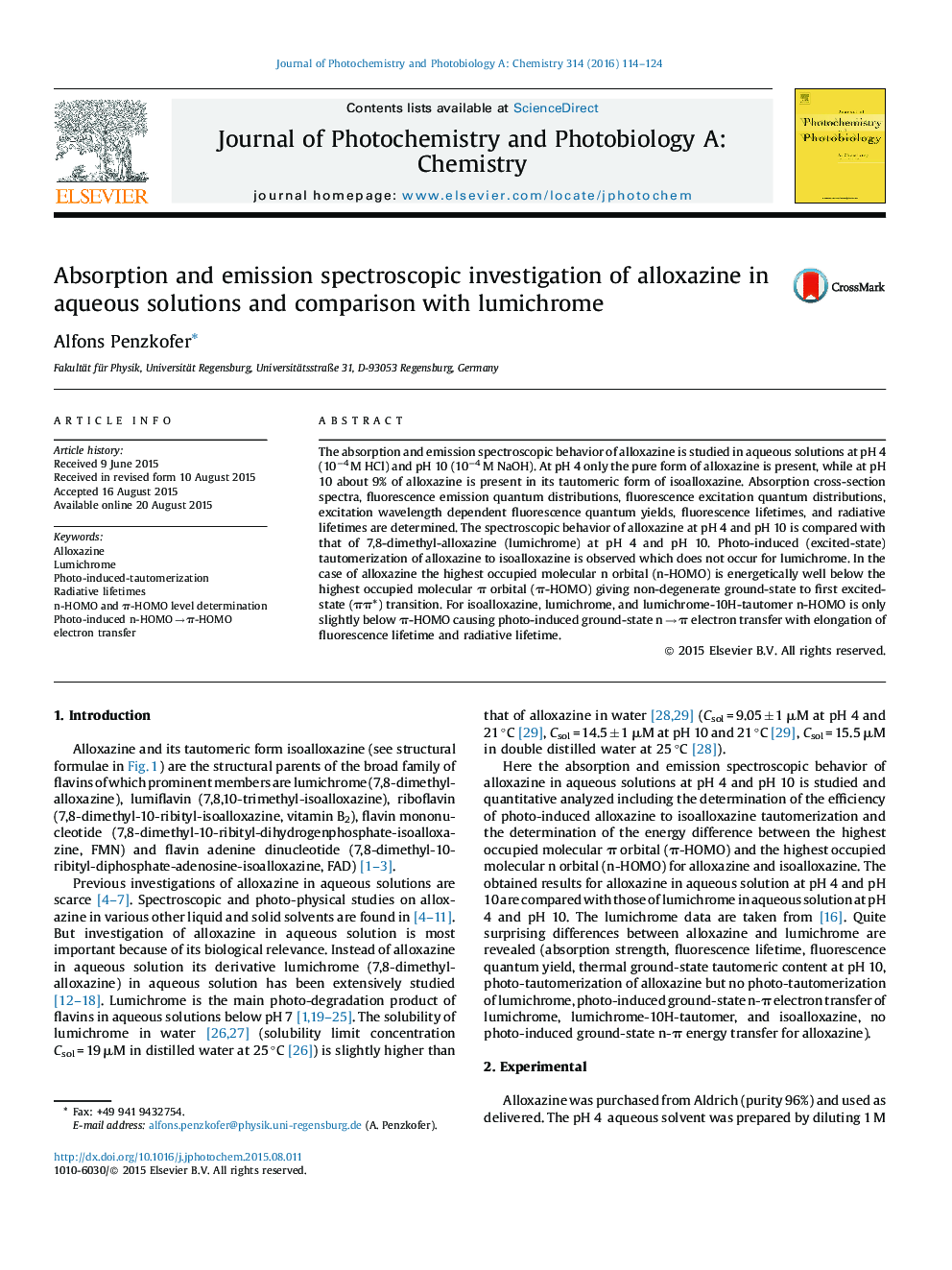| Article ID | Journal | Published Year | Pages | File Type |
|---|---|---|---|---|
| 26372 | Journal of Photochemistry and Photobiology A: Chemistry | 2016 | 11 Pages |
•Absorption cross-section spectra of alloxazine and isoalloxazine determined.•Fluorescence quantum distributions of alloxazine and isoalloxazine determined.•Photo-tautomerization of alloxazine in aqueous solutions observed and analyzed.•Radiative lifetime analysis to determine n-HOMO and π-HOMO levels.•Photo-induced n-HOMO → π-HOМO electron transfer observed and analyzed.
The absorption and emission spectroscopic behavior of alloxazine is studied in aqueous solutions at pH 4 (10−4 M HCl) and pH 10 (10−4 M NaOH). At pH 4 only the pure form of alloxazine is present, while at pH 10 about 9% of alloxazine is present in its tautomeric form of isoalloxazine. Absorption cross-section spectra, fluorescence emission quantum distributions, fluorescence excitation quantum distributions, excitation wavelength dependent fluorescence quantum yields, fluorescence lifetimes, and radiative lifetimes are determined. The spectroscopic behavior of alloxazine at pH 4 and pH 10 is compared with that of 7,8-dimethyl-alloxazine (lumichrome) at pH 4 and pH 10. Photo-induced (excited-state) tautomerization of alloxazine to isoalloxazine is observed which does not occur for lumichrome. In the case of alloxazine the highest occupied molecular n orbital (n-HOMO) is energetically well below the highest occupied molecular π orbital (π-HOMO) giving non-degenerate ground-state to first excited-state (ππ*) transition. For isoalloxazine, lumichrome, and lumichrome-10H-tautomer n-HOMO is only slightly below π-HOMO causing photo-induced ground-state n → π electron transfer with elongation of fluorescence lifetime and radiative lifetime.
Graphical abstractFigure optionsDownload full-size imageDownload as PowerPoint slide
